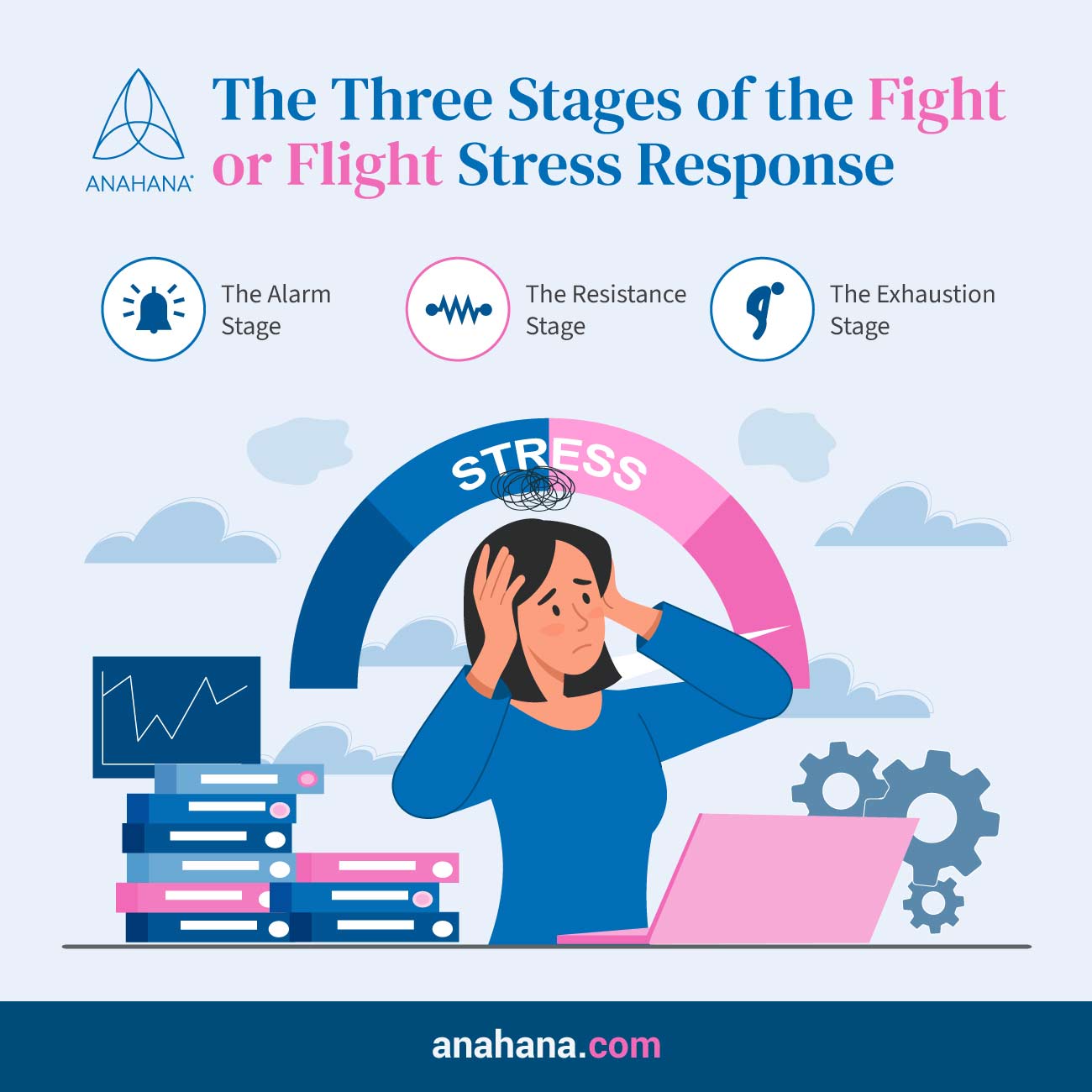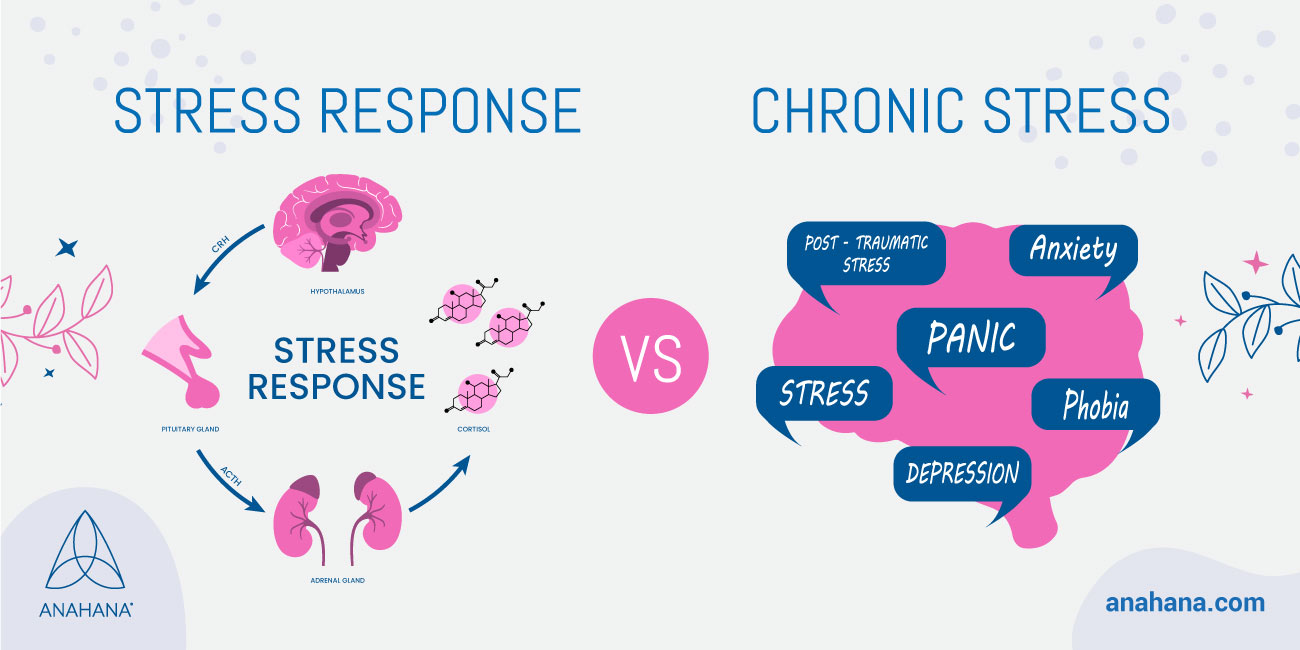
Table of Contents
The fight or flight response isn't just a phrase; it's a vital body reaction that readies us for immediate action. This complex physiological and psychological response can be a life-saving ally and a chronic health enemy. This guide delves into how this stress response functions and explore ways to foster well-being.
Key Takeaways
- Definition: The fight-or-flight response is the body's automatic reaction to perceived danger, preparing for either confrontation or escape.
- Physiological Changes: It involves an increase in heart rate, blood pressure, and adrenaline levels to boost physical readiness.
- Triggers: Activated by stress, fear, or threats, engaging the sympathetic nervous system.
- Evolutionary Purpose: It evolved as a survival mechanism to respond to immediate threats.
- Chronic Activation: Persistent stress can lead to health issues due to prolonged fight-or-flight responses.
- Management: Techniques like deep breathing and mindfulness can help control the fight-or-flight response.
The Fight-or-Flight Response
The fight-or-flight response is a physiological reaction that occurs in response to a perceived threat or stressor. It is an essential part of the human body's acute stress response, and its roots can be traced back to our evolutionary need to survive immediate dangers.
“The fight-or-flight response is an evolutionary adaptation that helps us deal with immediate threats but is not as well-suited to present-day chronic stressors.” – Sarah Sperber and Tchiki Davis
The fight-or-flight triggered reactions include increased blood pressure to ensure that blood rushes to the areas that need it most, such as the muscles and vital organs. Blood flow to muscles is enhanced, giving them the oxygen and nutrients they need to take immediate action.
Simultaneously, sharpening senses like sight and hearing allows for better assessment of threatening circumstances and more effective decision-making.
What Happens During the Fight-or-Flight Response
The fight-or-flight response is an acute stress response that prepares the body to either face or flee from a perceived threat. It's a complex process involving several stages and various physiological changes.
- Perception of Threat: The response begins with the brain recognizing a danger, whether it's a life-threatening situation or an emotional stressor. The central nervous system plays a critical role in interpreting the threat level.
- Release of Hormones: The brain signals the adrenal glands to release adrenaline, cortisol, and corticotropin-releasing hormones. This sudden release leads to several rapidly occurring reactions inside the body.
- Heart Rate and Blood Pressure Increase: The heart rate and blood pressure escalate to supply the muscles with more oxygen. Blood vessels dilate to facilitate increased blood flow.
- Respiration Increases: Breathing becomes more rapid, allowing more oxygen to enter and carbon dioxide to exit, ensuring the muscles are ready for action.
- Sensory Perception Enhances: More light enters the eyes, and other senses, like hearing, become more acute. This heightened awareness helps assess and respond to the situation.
- Muscles Tense: Muscles become primed for immediate action, whether to combat the acute stress or flee from it.
- Blood Clotting Ability Improves: The body's blood clotting ability enhances to prevent excess blood loss in case of injury.
- Digestive and Immune Response: Non-essential systems like digestion slow down, and the immune response is temporarily suppressed to divert energy to vital areas.
- Parasympathetic Nervous System Activation: Once the threat has passed, the parasympathetic nervous system helps return the body to normal pre-arousal levels. This relaxation response is critical for overall health.
- Potential Long-term Effects: If the fight-or-flight response is activated too often or extended, it can lead to health issues such as chronic stress, high blood pressure, anxiety disorders, and other problems.
- Individual Differences: The response can vary widely among individuals based on factors like past experiences, genetic predispositions, overall health, and the nature of the threat itself.
Understanding the intricacies of the fight-or-flight response can help individuals recognize these physiological changes and utilize strategies like relaxation techniques to manage them effectively.
The Three Stages of the Fight-or-Flight Stress Response

- Alarm Stage: Immediate reaction to danger.
- Resistance Stage: The body tries to cope with continuing stress.
- Exhaustion Stage: Prolonged stress leads to depletion of resources.
Recognizing the body's reactions to stress and the importance of effective stress management helps to understand the fight or flight response.
Physical Signs of a Fight-or-Flight Response
The physical signs of a fight-or-flight response are noticeable and are the body's way of preparing to face or flee from a threat. These include:
- Increased heart rate and blood pressure: Blood rushes to the muscles, preparing for physical action.
- Rapid breathing: This helps oxygenate the blood more effectively.
- Sweating: Keeps the body cool during the exertion.
- Pupil dilation: Allows more light into the eyes, sharpening vision.
These physical changes happen quickly and are part of the body's stress response, designed to enhance the ability to respond to an immediate danger.
How to Combat Stress Response With Relaxation Techniques

Relaxation techniques are vital in countering the fight-or-flee response and returning the body to pre-arousal levels. These methods help control blood pressure, reduce stress hormones, and calm the nervous system.
- Deep Abdominal Breathing: Focuses on taking slow, deep breaths, engaging the diaphragm to calm the sympathetic nervous system.
- Mindfulness Meditation: Encourages being present in the moment and accepting thoughts and feelings without judgment.
- Progressive Muscle Relaxation: Involves tensing and relaxing different muscle groups to reduce physical tension.
- Guided Imagery: Utilizing mental images to take a 'mental escape,' promoting relaxation.
These practices can be essential to stress management, offering physiological and psychological benefits.
Additional Techniques To Counter Chronic Stress
“Our natural fight-or-flight response helped our ancestors survive life-or-death threats. In the modern world, it can do more harm than good. Understanding the way a fight-or-flight response affects our mind and body can help us counteract many of the negative effects.” – Tchiki Davis
Chronic stress keeps the entire body in a constant state of high alert, often triggering the fight-or-flight response. Techniques to counter this condition focus on reducing stress, regulating blood pressure control, and restoring balance in the autonomic nervous system.
- Regular Physical Activity: Exercise helps in releasing pent-up tension and promoting relaxation. It can be as simple as a daily walk.
- Healthy Eating Habits: Balanced nutrition supports overall well-being and helps the body cope with stress.
- Cognitive-Behavioral Therapy (CBT): A mental health professional can help identify triggers and develop coping strategies.
- Sleep Hygiene: Ensuring adequate and quality sleep replenishes the body's resources and helps handle stress effectively.
These strategies provide a holistic approach to chronic stress, fostering overall health and well-being.
Benefits of Fight-or-Flight
While the fight-or-flight response is often associated with stress and potential health issues, it is crucial for survival. Here's why:
- Immediate Response: It enables the body to respond rapidly to life-threatening circumstances, increasing the chances of survival.
- Enhanced Performance: The body can perform at its peak when needed by increasing blood flow to essential areas like skeletal muscles and enhancing sensory perception.
- Prepares the Body: This response prepares the body to take immediate action, whether facing a growling dog or reacting to an imminent physical danger.
- Short-term Activation Benefits: When activated appropriately and not chronically, it's a vital part of the body's resources to cope with sudden threats.
The fight-or-flight response has evolved to protect us, and understanding its function and how to manage it is key to maintaining a balanced life and good mental health.
Examples of the Fight-or-Flight Response
The fight-or-flight response can be triggered by various situations, both real and perceived threats:
- Physical Danger: Encountering a threatening animal or a hostile person.
- Emotional Threats: A challenging job interview or public speaking engagement.
- Traffic Situations: A near-miss car accident that requires a sudden reaction.
- Sports: A critical moment in a competitive game requires immediate action.
- Medical Emergencies: A sudden health crisis requiring immediate intervention.
These examples highlight how the fight-or-flight response is not confined to life-and-death situations but is a part of daily life.
Fight-or-Flight Response vs. Rest-and-Digest
The fight-or-flight response and the rest-and-digest response represent two opposing mechanisms within the autonomic nervous system, responsible for regulating involuntary body functions.
The primary distinction is that while the fight-or-flight response sets the body for action, the rest-and-digest response puts the body in relaxation mode.
- Fight-or-Flight Response
Governed by the sympathetic nervous system, the fight-or-flight prepares the body to confront or escape danger by increasing the heart, blood pressure, and breathing rates and directing blood to muscles. This is the body's way of mobilizing energy and resources for immediate action, allowing us to react quickly in stressful or threatening situations.
- Rest-and-Digest Response
Activated by the parasympathetic nervous system, the rest-and-digest slowsheart rate and breathing, reducing blood pressure and diverting blood to the digestive system. It facilitates healing and digestion and conserves energy, restoring the body to equilibrium.
Frequently Asked Questions on Fight-or-Flight Response
What is being in fight or flight?
Being in a fight or flee means the body is in a state of high alert, preparing to face or flee from a perceived threat. It involves a series of physiological reactions like increased heart rate, blood pressure, and heightened senses.
What are the three symptoms of fight or flight?
Three common symptoms of the fight-or-flight response are rapid heartbeat, faster breathing, and dilated pupils. These changes prepare the body for immediate action.
What does fight or flight feel like?
Fight or flight feels like a sudden surge of energy and alertness. There may be a sensation of adrenaline rush, increased focus, and readiness to respond. It can also create anxiety or fear if the response is intense or unexpected.
What triggers fight or flight?
Triggers for the fight-or-flight response vary, including physical dangers, emotional stress, unexpected news, or even the thought of a threatening situation. Individual sensitivities to triggers can also differ widely.
Is fight or flee stress or anxiety?
Fight or flight can be a response to both stress and anxiety. Stress often triggers it in response to an external stimulus, while anxiety can initiate it even without an immediate threat. Chronic activation of this response can lead to anxiety disorders.
References
Understanding the stress response - Harvard Health
What Is the Fight-or-Flight Response?
How the Fight or Flight Response Works - The American Institute of Stress
Physiology, Stress Reaction - StatPearls - NCBI Bookshelf
Fight-or-flight response - Wikipedia
Disclaimer
The contents of this article are provided for informational purposes only. Anahana does not provide medical advice, diagnosis, or treatment and should not be used as a substitute for medical advice from a healthcare professional. Anahana encourages consulting a qualified healthcare professional for medical guidance. Anahana is not liable for any errors, omissions, or consequences that may occur from using the information provided.

By: Emma Lee
Emma is an editor for Anahana and a soon-to-be graduate of the Master of Science program at the University of Toronto. She graduated with a Bachelor’s in Neuroscience and Immunology at the University of Toronto and has extensive experience in research. She is passionate about learning the science behind health and wellness and hopes to contribute her knowledge to help people live healthier lives. Outside of Anahana, Emma enjoys exploring nature, playing with her dog, and doing arts and crafts.